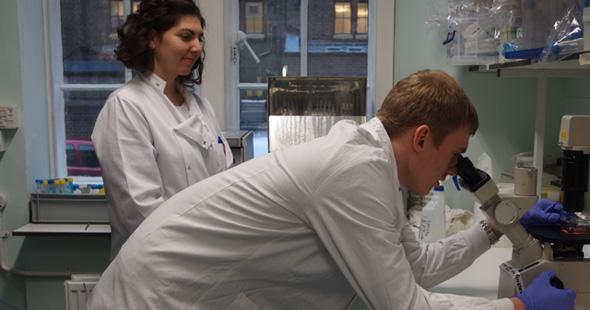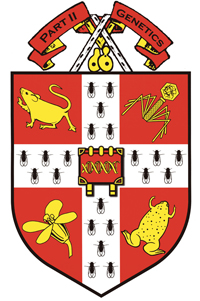
Projects
The Genetics Department offers the choice of “wet” or “dry” projects, which are undertaken in the Lent Term.
Examples of project titles from previous years
- The role of CTCF in imprinted domains.
- Imprinted gene products in lactation and postnatal resource control.
- Maintenance and establishment of DNA methylation at variably methylated regions in early embryos.
- A combined phylogenetic and epigenetic approach to understand domestication of transposable elements in the human genome.
- Control of terminal differentiation in the Drosophila germline.
- Exploring the role of mechanical signals in the specification of the gastrula organizer.
- Connectomics approach to study the role of an unusual pair of neurons in Drosophila learning circuitry.
- Quantitative patterning roles of Prd and Ftz in the Drosophila pair-rule gene network.
- Endoplasmic reticulum (ER) and the axon degeneration disease, hereditary spastic paraplegia.
- Solving the mystery of microtubule organisation in epithelial cell.
- Mechanisms at the interface between cell polarity and the cell cycle.
- TOPBP1 in mitosis.
- Molecular dynamics simulations of protein binding to supercoiled DNA.
- Estimation of mutation rates in Malawi cichlids and small ermine moths.
- Characterising respiratory adenovirus diversity with a novel Nanopore sequencing method.
- The genetic basis of virus resistance in Drosophila.
- Dengue virus evolution.
- Inferring stem cell dynamics from the shape of a single-cell genealogy.
- The long-term consequences of hybridization, or When can we fix heterosis?
- Biofilm Formation in E. coli: Investigating the Tryptophanase-Related Mechanisms.
- Activity of urinary extracellular vesicles against E. coli biofilms.
- Understanding the evolution of flower patterning using transcriptomic approaches.
- Role of flavonols during petal development.
Examples of BBS dissertation titles from previous years
Past topics have included:
- Can we assign a function to 80% of the DNA in the human genome?
- The biology of CRISPR/CAS systems and their uses in eukaryotic genome engineering.
- How can genomic data be used to understand cancer evolution and to assist with cancer therapy?
- How does a cell make a decision to divide – or stop dividing?
- How have bdelloid rotifers avoided sex for so long?
- Discuss the concepts presented in C H Waddington’s 1942 paper in Nature ‘Canalisation of development and the inheritance of acquired characteristics’.
- Transgenerational epigenetic inheritance in mammals - fact or fiction?
- Many human cancers are aneuploid. Yet aneuploidy has detrimental effects on human development and has been shown to reduce cellular fitness : Consider this conundrum.
- Why do endosymbiotic bacteria have small genomes?
- Cell and gene therapy – the future of human monogenic disorders.
- Have regulatory changes been more important for the evolution and divergence of species than changes in protein coding sequence?
- Discuss recent developments in the mechanistic understanding of cell size control.
- Transposable elements and their impact on human health - new opportunities in the era of large scale human genome sequencing.
- Can the bacterial endosymbiont Wolbachia eliminate vector-borne disease?
- Safeguarding genome integrity: DNA damage and repair in heterochromatic domains of eukaryotic genomes.
- Genetic Mechanisms of pattern formation on the surface of plants and animals.
- What can single cell 'omics approaches really tell us about biology?
- Understanding the ability for chikungunya virus to persist endemically in populations.
- How important was the impact of archaic admixture on the human genome?
- How are important are mutations of large effect for adaptation by natural selection?
- What has experimental evolution taught us about how new species arise?

